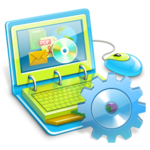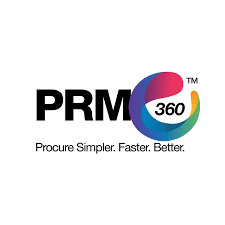Most catalog management software may be accessed from numerous devices and platforms. This enables consumers to manage their catalogs from their choice device, such as a desktop computer, laptop, or mobile device. Many software packages also include cloud-based access, which allows users to log in from any device with an internet connection. This feature allows for seamless communication among team members while also simplifying catalog updates and sharing.
List of 20 Best Catalog Management Software
WizCommerce solution for wholesalers and manufacturers seeking to streamline their sales process. Our advanced platform allows for seamless online, field, and trade show order taking, while our exclusive AI engine increases upsells. With a visually a...Read More WizCommerce
MyBusinessCatalog solution for managing your product catalog and boosting e-commerce success. With its advanced capabilities, effortlessly create a digital catalog and drive online sales. Designed for Android, conveniently create and share catalogs o...Read More MyBusinessCatalog
Flip PDF is a tool for converting regular PDF documents into engaging HTML5 flipbooks with ease. With a wide range of personalized templates and seamless integration of multimedia features, enhance your digital publications like never before. See the...Read More Flip PDF
FlippingBook is a software that transforms ordinary PDFs into interactive and visually stunning flipbooks powered by HTML5. Designed for various industries, such as marketing and sales, FlippingBook seamlessly integrates with your current systems and...Read More FlippingBook
Catsy is solution for managing all your product information and digital assets in one convenient platform. This powerful PIM and DAM tool simplifies eCommerce operations by ensuring precise and effective distribution across all your sales channels. N...Read More Catsy
DataStream is a solution that enhances business efficiency and success. Through streamlining data management and automating routine tasks, it empowers companies to prioritize critical objectives, leading to growth and improved operational efficiency...Read More DataStream
Smart Catalog is a software solution for effortless product management. Revamp your catalog with our user-friendly creation process, seamless integration with e-commerce platforms, and real-time updates. Delight customers with advanced search capabil...Read More Smart Catalog
ANTEROS is a software that transforms PIM and Crossmedia management. This all-in-one solution revolutionizes product data management, automates catalog generation, and enhances webshops for increased productivity in any industry. Say goodbye to tedio...Read More ANTEROS
Aravo is a leading and reputable third-party risk management solution, utilized by companies worldwide. Its advanced features enable businesses to efficiently assess risk, maintain compliance, and manage complex networks. Through Aravo, organizations...Read More Aravo
the Bigdbiz Customer Online Order App - the perfect e-commerce solution for businesses seeking to expand their online reach. With a customized administrator login, our app simplifies brand and company management. Say farewell to complex online proced...Read More Bigdbiz Customer Online Order App
CleverCat - the leading software for creating catalogs that is perfect for businesses of all sizes. This efficient and user-friendly tool streamlines the catalog design process, allowing users to easily manage and publish professional-looking catalog...Read More CleverCat
Pagination is the essential catalog management software that revolutionizes your workflow. With automatic updates and streamlined portfolio management, Pagination ensures efficient data export. Enjoy fully customizable templates for effortless report...Read More Pagination
PRM360, the innovative Simplified Procure-to-Pay Suite from Acads360 India Pvt Ltd. Powered by the cloud, our robust procurement software optimizes and automates the entire procure-to-pay process, resulting in cost reductions and risk mitigation for...Read More PRM360
eCentral is a solution for businesses looking to revolutionize their product information management, catalog creation, and order processing. With full integration to your eCommerce websites, mobile devices, and dealer portals, this platform simplifie...Read More eCentral
Elastic is B2B digital platform that helps retailers and dealers boost their sales and streamline operations. With features like real-time product visibility, easy order creation, and accurate tracking, Elastic enables businesses to improve efficienc...Read More Elastic
Flipsnack is a digital publishing platform that revolutionizes traditional PDFs into dynamic flipbooks. Designed for professionals, our user-friendly software offers a range of advanced customization features, seamless sharing capabilities, and in-de...Read More Flipsnack
OmniCare: the revolutionary software that is transforming patient management. Through its cutting-edge features, OmniCare simplifies billing and optimizes data management, allowing healthcare providers to focus more on delivering exceptional patient...Read More OmniCare
Meplato Store is a SaaS platform that revolutionizes the way suppliers handle their catalogs. Our user-friendly interface and seamless integration options empower suppliers to effortlessly customize and manage catalogs for large procurement organizat...Read More Meplato Store
BetterCommerce is a commerce software that offers a range of modules including Ecommerce, Product Information Management (PIM), Order Management System (OMS), and Analytics. Our platform seamlessly integrates these modules to provide a highly customi...Read More BetterCommerce
Catalog Bar is a digital catalog software designed to enhance B2B sales. This powerful solution streamlines product management and offers a user-friendly interface, making it easier for teams to showcase and sell their products. With interactive feat...Read More Catalog Bar
Learn More About Catalog Management Software
- What Is Catalog Management Software?
- What Are The Recent Trends In Catalog Management Software?
- Benefits Of Using Catalog Management Software
- Important Factors To Consider While Purchasing Catalog Management Software?
- What Are The Key Features To Look For In Catalog Management Software?
- Why Do Businesses Need Catalog Management Software?
- How Much Time Is Required To Implement Catalog Management Software?
- What Is The Level Of Customization Available In Catalog Management Software?
- Which Industries Can Benefit The Most From Catalog Management Software?
- Conclusion
What Is Catalog Management Software?
Catalog management software is an effective tool for streamlining and simplifying the process of producing, managing, and distributing product catalogs. It is a crucial solution for businesses of all kinds, from small startups to major corporations, that want to handle their items more efficiently and improve their overall sales process. At its core, catalog management software is a single platform for storing and updating all product information, including photographs, descriptions, pricing, and availability.
This eliminates the need to manually revise and reprint printed catalogs, which saves time and costs. Furthermore, catalog management software allows businesses to develop visually appealing and configurable catalogs, complete with complex features such as product classification, search and filter options, and personalized pricing for various consumer groups.
This contributes to presenting a consistent and professional catalog to potential buyers, allowing them to simply identify and purchase the products they are interested in. One of the key advantages of employing catalog management software is its ability to effortlessly interface with a variety of sales channels, including online marketplaces, social media, and e-commerce platforms.
Products can be published and sold over many channels at the same time, providing a greater reach and enhanced revenue prospects. Furthermore, catalog management software includes extensive analytics and reporting tools that provide significant insights into the performance of various goods and sales channels. This information can be utilized to make more informed judgments and to improve product offers and sales strategies.
What Are The Recent Trends In Catalog Management Software?
Catalog management software has witnessed a major growth in popularity in recent years, as more firms see the benefits it provides to their processes. But what are the current trends in this software category? Let's have a closer look.
1. Integration Of E-commerce Platforms: One of the most visible trends in catalog management software is connectivity with e-commerce platforms. With the development of online purchasing, firms are seeking ways to streamline their online catalogs. This has resulted in the creation of software that connects effortlessly with prominent e-commerce systems like Shopify, Magento, and WooCommerce. This integration allows firms to quickly maintain and update their product catalogs across all sales channels.
2. Cloud-Based Solutions: Cloud-based solutions have grown in popularity over the last few years, and catalog management software is no exception. Businesses favor cloud-based solutions because of their accessibility, scalability, and cost-effectiveness. Businesses can now store and manage vast catalogs in the cloud, allowing them to access their data from anywhere and communicate with team members more effortlessly.
3. AI and Machine Learning: Catalog management software is increasingly using artificial intelligence (AI) and machine learning (ML). These technologies allow firms to automate time-consuming and error-prone operations like product categorization and tagging. AI and ML also assist organizations in making data-driven decisions based on insights from their product catalogs, such as finding popular products and forecasting demand.
4. Mobile-Friendly Solutions: A growing number of organizations use mobile devices for commercial operations, including catalog management. This has resulted in the development of mobile-friendly systems that enable businesses to manage their catalogs on the go. Mobile-friendly catalog management software simplifies catalog updates while also allowing firms to adapt rapidly to market developments and client needs.
5. Omnichannel Capability: In today's digital age, customers want a consistent experience across all sales channels. Catalog management software with omnichannel capabilities enables businesses to keep their product catalogs consistent across numerous channels, such as physical stores, e-commerce platforms, marketplaces, and social media. This not only enhances the client experience, but also allows businesses to better manage their inventory and avoid overselling.
Benefits Of Using Catalog Management Software
Catalog management software is an invaluable resource for any company trying to consolidate product information and improve sales channels. It provides a number of advantages that can help save time, improve accuracy, and increase overall efficiency.
Let's take a closer look at the main advantages of adopting catalog management software for your organization.
1. Centralized Product Information" Management: One of the key advantages of adopting catalog management software is the ability to handle all of your product information from a one spot. This allows you to easily update and amend product information, prices, and availability across different sales channels, including websites, marketplaces, and social media platforms. This eliminates the need for human data entry, lowering the likelihood of errors and inconsistencies while saving you time and effort.
2. Increased Product Visibility: Having a well-managed and regularly updated catalog is critical to the success of your organization. Catalog management software keeps your product information correct and up to date, making it easier for buyers to find them online. This improves product visibility, which can result in greater sales and revenue.
3. Efficient Order Processing: Catalog management software allows you to effortlessly organize and track orders from multiple sales channels in one spot. This removes the need for human order processing, lowering the risk of errors and delays. Furthermore, some catalog management software includes capabilities such as automatic order fulfillment, which can help you save time and enhance overall order processing efficiency.
4. Customizable Product Catalogs: Catalog management software enables you to design product catalogs that are suited to the needs of various sales channels. This means you can construct separate catalogs for various marketplaces, websites, and social media channels, ensuring that your product information is optimized for each channel. This can assist improve your customers' overall purchasing experience, resulting in improved conversion rates.
5. Real-Time Data: Tracking and Analytics: Another significant advantage of employing catalog management software is the ability to track and analyze data in real time. This enables you to track your items' success across several sales channels, spot patterns, and make data-driven decisions to optimize your marketing and sales tactics. You can also monitor inventory levels to guarantee that your products are always available to satisfy customer demand.
Important Factors To Consider While Purchasing Catalog Management Software?
When it comes to choosing catalog management software, there are numerous key elements to consider to guarantee you make the best decision for your company. Here are some crucial items to consider before making your purchase:
1. Software Kind: The first step is to decide the type of catalog management software required by your firm. There are several varieties accessible, including cloud-based, on-premise, open source, and more. Each type has advantages and disadvantages, so it's critical to carefully consider which one best meets your business needs.
2. Features And Functionality: It is critical to have a thorough understanding of the software's capabilities. Catalog generation, product administration, order processing, multi-channel selling, and analytics capabilities are some of the most crucial elements to consider. Make a list of your company's requirements and confirm that the software you purchase has all of the necessary capabilities.
3. Usability: A user-friendly interface is an important feature to consider when selecting any product. Your catalog management software should be intuitive and simple to use, allowing your team to swiftly adjust without requiring a significant learning curve. This will save you both time and resources in the long run.
4. Integration With Other Systems: It is critical that the catalog management software you select interacts seamlessly with your other systems, such as your e-commerce platform, CRM, or ERP. This allows for a smooth flow of data and streamlines your business operations.
5. Budget: Before making a purchase, you should determine your budget. While high-end software may have more advanced features, it may not be appropriate for a small firm. Consider your budget carefully and select software that provides the desired capabilities at a fair price.
6. Scalability: Your catalog management software should be able to grow with your organization. It should be capable of handling a rising volume of products, orders, and users. Consider your company's growth potential and make sure the software you chose can support it.
7. Customer Assistance: Reliable customer support is critical for any software. Look for a company who provides good customer service and is there to assist you with any concerns or inquiries. By taking these elements into account, you can make an informed selection when selecting catalog management software that will fulfill your company's demands while also contributing to its growth and success.
What Are The Key Features To Look For In Catalog Management Software?
Catalog management software is an essential tool for firms that want to successfully manage and organize their product catalogs. With the increasing demand for e-commerce, organizations must have a strong catalog management system in place to efficiently promote and sell their products. When comparing various catalog management software choices, it is critical to examine five crucial aspects to help you make an informed purchase that best meets your company's needs.
1. User-Friendly Interface And Navigation: The most important characteristic to look for in catalog management software is an easy-to-use interface and navigation. It should be simple to explore and comprehend, allowing you to add, update, and delete products with ease. A complex and confusing interface might cause delays in catalog creation and updates, reducing overall efficiency.
2. Customization Options: Each organization has distinct requirements, and your catalog management software should include configurable capabilities to fit those demands. This includes the ability to modify product categories, attributes, and pricing options. The software should also allow you to develop bespoke catalog layouts and designs, ensuring that your clients have a consistent brand experience.
3. Comprehensive Product Management: The primary goal of catalog management software is to help you manage your products more efficiently. It should have capabilities like bulk product uploading, batch changes, and inventory management to save time and effort. The software should also allow you to classify products into categories and subcategories to help clients find what they're looking for.
4. Multi-Channel Support: If your company sells products through numerous channels, it is critical to select catalog management software that integrates with these channels. It should enable you to synchronize your catalogs across several channels, including online marketplaces, social media platforms, and your website. This will improve your product management process by ensuring consistent and up-to-date information across all channels.
5. Analytics And Reporting: Having accurate insights and data is critical for making sound company decisions. Your catalog management software should have analytics and reporting tools to help you analyze product performance, discover top-performing products, and measure the efficacy of your marketing campaigns. This tool will help you improve your product offerings and sales techniques.
6. Integration With Other Business Tools: To improve overall business processes, your catalog management software should work seamlessly with other tools you employ, such as ERP, CRM, and POS systems. This eliminates the need for manual data entry and ensures that your data is accurate and up to date on all platforms.
Why Do Businesses Need Catalog Management Software?
Businesses require catalog management software to efficiently and effectively manage their product catalogs. A product catalog is a detailed inventory of all the goods and services provided by a company. It contains critical information including product descriptions, prices, photos, and other pertinent features. With the rise of e-commerce, businesses are spreading their reach to online platforms, necessitating a well-maintained and updated catalog.
Catalog management software streamlines the process of establishing, organizing, and updating product catalogs. It reduces the manual and time-consuming procedures associated with catalog management, such as data and image input, formatting, and updates. Instead, it provides a consolidated platform for automating and simplifying the entire catalog management process.
One of the primary advantages of adopting catalog management software is the ability to keep product information correct and consistent across all channels. Businesses can use the software's product information management (PIM) capabilities to keep their catalogs up to date with the most recent product information, reducing the risk of showing incorrect or obsolete product details.
Another benefit of using this program is the increased efficiency and productivity it provides. With all product information in one location, firms can easily make modifications, add new products, or alter prices without having to go through each channel separately. Businesses benefit from this because it streamlines the process, lowers errors, and saves time and resources.
Furthermore, catalog management software helps organizations gain a better understanding of their product performance. Businesses can acquire significant insights about the effectiveness of their catalogs by using analytics and reporting tools, such as which products are popular, which channels perform well, and which products should be promoted or dropped.
How Much Time Is Required To Implement Catalog Management Software?
The time necessary to establish catalog management software varies depending on your business's specific demands and the program you select. However, it can take anywhere from a few weeks to several months to properly develop and integrate the software with your existing systems. The first step in implementation is to evaluate your current catalog management process and find opportunities for improvement.
This may include obtaining information on your items, suppliers, and price. Before deciding on a software solution, you must first understand your business requirements. After you've chosen a suitable software, the next step is to modify and adapt it to match your individual requirements. This may include categorizing your products, establishing price standards, and creating supplier connections.
Depending on the intricacy of your catalog, this procedure can take anything from a few days to many weeks. Following the first setup, the program must be checked to confirm that it fulfills your needs and works properly. This could include importing sample data and modeling various situations to find any flaws that need to be addressed.
The final step in the implementation process is to teach your team how to utilize the program efficiently. This is critical to ensuring that your staff understand the software's features and can utilize them to streamline their catalog management activities. Training time may vary based on the intricacy of the software and your team's skill level.
However, thorough training is required to harness the benefits of the program and minimize future problems. Overall, while calculating the time required to adopt catalog management software, it is critical to account for the initial setup, testing, and training phases. By correctly planning and allocating resources, you can ensure that your business's implementation process runs smoothly and successfully.
What Is The Level Of Customization Available In Catalog Management Software?
When deciding which catalog management software to purchase, one critical factor to consider is the level of flexibility available. This refers to the capacity to customize the software to meet your individual business objectives and branding specifications. Many catalog management software choices include extensive customization, allowing firms to develop a unique and personalized catalog for their clients.
This includes configurable themes, custom fields, and the opportunity to incorporate your own branding and design components. Some software also supports more extensive customization features, such as the ability to design custom workflows and automate specific tasks. This can help firms save time and resources when managing and updating their catalogs.
Before purchasing any software, it is critical to thoroughly evaluate the level of customization available. Consider your individual business requirements, as well as the level of flexibility and control you need while managing your catalog. Some software may provide simple customization possibilities, while others may include a broader range of functions. Finally, the level of customization available in catalog management software can have a significant impact on how well the software integrates with your whole company processes. Make sure to properly investigate and demo many possibilities before deciding on the ideal one for your business.
Which Industries Can Benefit The Most From Catalog Management Software?
Catalog management software is an effective tool that can aid a variety of companies. It includes a number of features and capabilities that can help streamline business operations, boost efficiency, and drive sales. While each industry has its own set of needs and expectations, there are a handful that can profit the most from deploying catalog management software.
1. Retail: Catalog management software can be extremely beneficial to retailers of all sizes. With the ability to develop and maintain product catalogs, businesses can quickly organize their inventory, update pricing and product information, and personalize their consumers' shopping experiences. This might result in greater revenue and client happiness.
2. E-commerce: Catalog management software is an essential tool for online retailers. It enables the effective organizing and categorization of products, making it easier for customers to find what they are looking for. Furthermore, by integrating with e-commerce systems, firms can easily manage their online store and keep product information up to date.
3. Manufacturing: Catalog management software can be beneficial to the manufacturing business. Manufacturers may ensure that their items are in stock and ready for production by using inventory tracking and management. Additionally, the software's ability to create and update product specs might assist businesses streamline their product development processes.
4. Wholesalers: Having an ordered and up-to-date catalog is critical for fulfilling orders and meeting consumer needs. Catalog management software can simplify this process by offering a consolidated platform for organizing product information and pricing, resulting in more efficient order processing and delivery.
5. Distribution: Distributors, like wholesalers, can benefit substantially from catalog management software. Distributors may provide their clients with accurate and up-to-date product data by managing product information, pricing, and availability in real time. This can lead to higher client satisfaction and sales.
Conclusion
Finally, picking the correct catalog management software may help businesses of all sizes. These software solutions, which streamline and optimize catalog production, administration, and distribution operations, can save time, enhance accuracy, and increase sales. Before making a purchase selection, examine your budget, business goals, and available options.
Furthermore, completing extensive research and reading user reviews can provide useful information about a software's performance and usability. Buyers can choose the best catalog management software for their specific needs by following these steps and evaluating different solutions.With the correct software in place, businesses can effectively arrange and exhibit their items, resulting in better customer satisfaction and, eventually, higher income. We hope this buyer's guide has helped you make an informed selection.
Catalog Management Software FAQ's
Can Catalog Management Software Be Accessed Across Multiple Devices and Platforms?
Is Catalog Management Software Future-Proof And Adaptable To Emerging Technologies Like Ai, Blockchain or Iot?
Yes, most catalog management software is meant to be future-proof and adaptable to upcoming technologies such as artificial intelligence, blockchain, and the Internet of Things. This is due to advances in software development and the necessity for organizations to remain current and competitive. Many catalog management software vendors are constantly updating their systems to incorporate new technologies and improve functionality, making them an excellent choice for organizations trying to stay ahead of the curve.
Is There A Free Trial Offered To Assess Catalog Management Software Before Committing?
Yes, many catalog management software vendors allow a free trial period to evaluate their product before committing to a subscription. This enables potential users to evaluate the software's features and functionality to determine whether it satisfies their requirements. It is usually encouraged to take advantage of the trial time to check that the software is a good fit for your company's needs.
Does Catalog Management Software Offer Data Security Features And Meet Regulatory Compliance Standards?
Yes, catalog management software often includes data security measures and is intended to meet regulatory compliance requirements. These features may include sensitive data encryption, user permission-based access, and safe data storage. Furthermore, many catalog management software solutions are continually updated to keep up with industry norms and compliance standards. This allows organizations to secure the security and safety of their data while also meeting any regulatory requirements.
Can Catalog Management Software Integrate Seamlessly With Existing Tools And Platforms?
Yes, most catalog management software integrates with major platforms and tools like e-commerce websites, ERP systems, and point-of-sale systems. This allows for smooth data synchronization and helps firms manage their catalogs more effectively. Some catalog management software even provides configurable integrations to meet the specific demands of a firm. Businesses can use these interfaces to streamline their operations and gain a competitive advantage in the market.






















